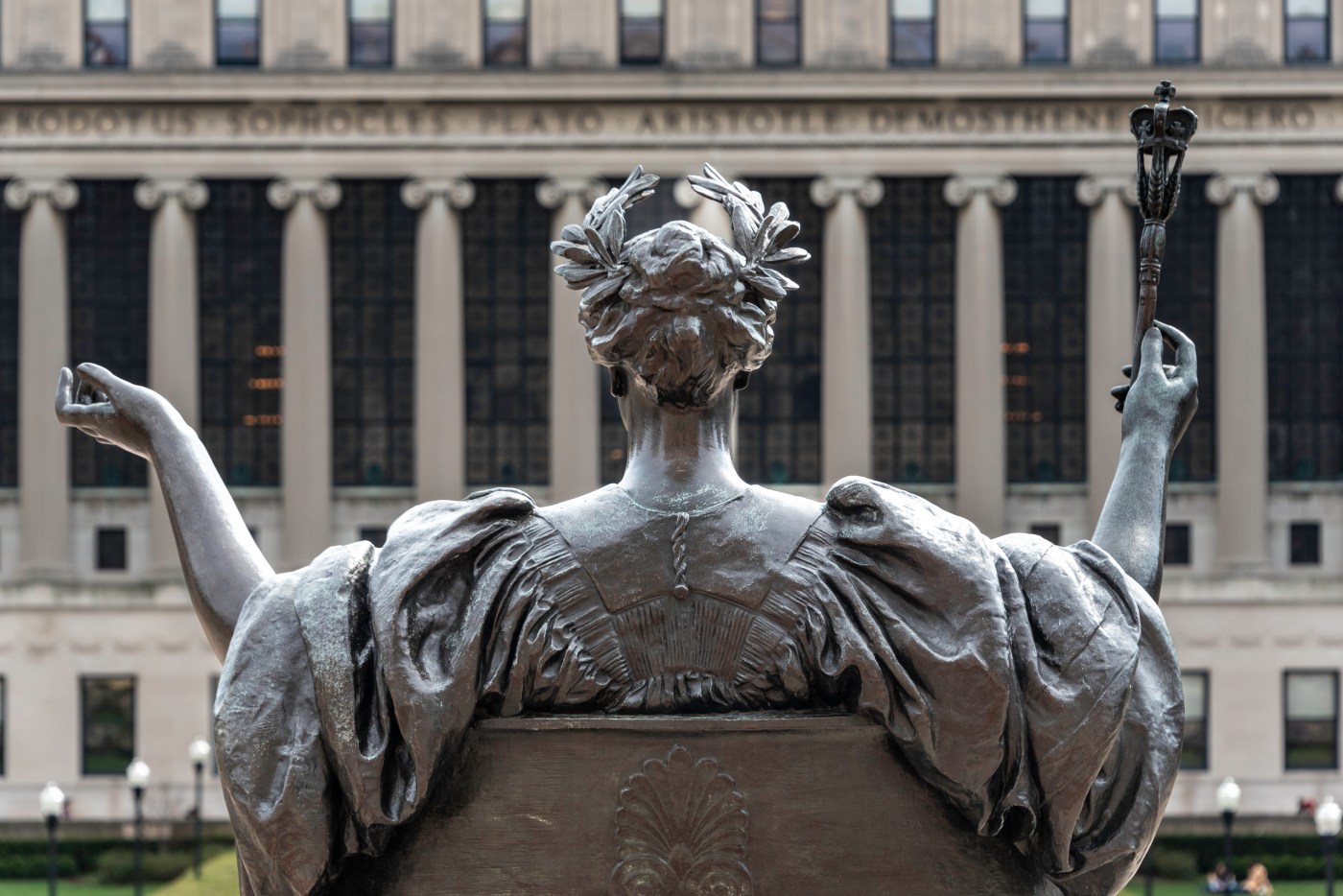Should science and the humanities in the modern American university get a divorce? That was the argument advanced in these very digital pages by Evan D. Morris, a professor of radiology, biomedical imaging, and biomedical engineering at Yale. Put briefly, Morris’ argument is that the current crisis facing universities is the result of “woke” humanities and the Trump administration’s campaign against them, which are damaging the sciences. As a result he is “confident” he can make his “most persuasive case for a university of science, engineering, and medicine, if the humanities are not housed under my roof.”
This is an argument that would reek of moral cowardice, bowing to the whims of a would-be autocrat, if it were right in the particulars, but worse yet it is wrong in the particulars. It misunderstands the structure of university finances, mistakes a broad-based assault on the sciences for a war only on the supposedly “woke humanities,” and perhaps worst of all assumes that authoritarians can be bought off with appeasement, something that stands as perhaps the single most discredited notion of the 20th century.
The most immediate problem for an “unyoked” university of sciences without the humanities is that it would be financially unsustainable. The financial crisis of higher education has many causes, but one of them is the repeated insistence of university leaders on channeling more funding towards prestigious but expensive STEM programs while cutting ideologically disfavored but cheap and profitable programs in the traditional liberal arts. That includes both the humanities but also inexpensive STEM fields like math, which has faced similar pressures. While public perception is that the humanities don’t make money, not only are humanities departments generally profitable, their profits cross-subsidize other programs, frequently STEM programs which cost more than they earn.
At the undergraduate level, the math is fairly simple: Undergraduates generally pay the same tuition, regardless of their majors or the classes they take, but humanities professors are paid less, often while teaching more classes, and do not require expensive teaching facilities (like labs) or software licenses. Meanwhile, when it comes to graduate studies, it is true that science, engineering, and medical programs bring in more grant funding, largely because the grant funding agencies for medicine and the sciences (the National Institutes of Health and the National Science Foundation) are roughly 200 times and 50 times, respectively, larger than those funding the humanities. (That is, the National Endowment for the Humanities and the National Endowment for the Arts). But the major STEM research fields are still often a drag on university finances. While grants come with overhead for fixed costs, even before the Trump administration’s cuts, these grants typically did not cover the whole cost of research—and the university is on the hook for the remainder. Indeed, as Penny Gordon-Larsen, the University of North Carolina at Chapel Hill’s vice chancellor for research, noted in February, universities “also contribute significant funding to research, sometimes exceeding federal support.”
Research in the humanities, by contrast, is orders of magnitude cheaper and often involves minimal overhead beyond staff or facilities already required for teaching. Expensive research fields like medicine can bring in enormous grants and still run as substantial net losses to their parent universities—to be subsidized by profits earned in cheaper liberal arts programs.
Removing the important, but expensive and unprofitable, research-heavy STEM programs from their subsidizers in the liberal arts would produce science, engineering, and medicine universities that would either have unsustainable finances or tuition even more absurdly higher than today, if not both. By contrast, we can know that the model of a college built around the liberal arts is sustainable because it has been sustained: It’s the primary financial model for America’s more than 200 small liberal arts colleges. Of course many of these colleges face headwinds as well, but the absence of comparable “small science and medicine colleges” (as even STEM-focused research institutions like MIT and Johns Hopkins University maintain humanities programs) speaks to the economic realities already discussed. Were the sciences to throw the humanities overboard and attempt to support university operations on their own, as Morris suggests, they would promptly run out of money.
Worse yet, a university of the sciences untethered from the liberal arts would hardly escape the ire of the Trump administration, whose broad-based assault on the notion of expertise has the sciences, not the humanities, in the center of its crosshairs. While the administration has struck at funding for the humanities, that project has made little impact in university finances for the simple reason that Uncle Sam never funded the humanities much in the first place. Instead, it is the massive cuts to science and medical research funding that have caused a nationwide higher education funding crisis. Grant cancellations at the National Science Foundation (NSF) alone have totaled more than $1.1 billion, more than two and a half times the entire combined annual budget of the NEA and the NEH. Cuts to medical funding are even more severe, with extramural NIH funding down around $5 billion year-on-year in June, more than 12 times that of the combined NEA/NEH budget. It is simply not possible for the administration to do this scale of damage to the “woke” humanities because it never funded the humanities, woke or otherwise, at anywhere near this scale.
Meanwhile the notion that the administration can effectively target “woke” research at all is belied by the sledgehammer approach to slashing science research. Declaring war on the “woke” in science appears to involve shutting down many very legitimate fields of research, such as research on weather and the climate or health disparities across racial or ethnic groups. It has also meant cutting grants meant to train scientists from a broader range of backgrounds, ironically including a great many from poorer rural areas which disproportionately voted for Trump.
These attacks are not collateral damage, but part of a broader assault on expertise generally and science particularly. The administration’s position, as Health and Human Services Secretary Robert F. Kennedy Jr. recently declared in an interview, is that “we need to stop trusting the experts.” That agenda is reflected in massive cuts to medical research and staff beyond the university. ProPublica reports that the NIH has already lost more than 15 percent of its internal workforce, some 7,000 researchers and administrators, in addition to the grant cuts noted above. Kennedy also recently announced the cancellation, for instance, of all federal support for mRNA vaccine research—a single cut that alone is still bigger than all federal support for the arts and humanities.
Kennedy’s assault on medicine represents fairly clearly the political expression of a movement skeptical of medical science, long marinating in misinformation before being radicalized during COVID-19. In short, while Morris seems to imagine the threat universities face is a “woke humanities” problem, the greatest danger to university funding today is without a doubt a product of a catastrophic failure of public communication in his own field: medicine.
It is a striking failure of understanding, then, to respond to a crisis of public communications in the STEM fields by attempting to gain even greater distance from the humanities that take as part of their purpose teaching more effective public communication. This separation, which Morris welcomes, was rightly feared by the architects of the American higher education system. In 1947, as the Cold War loomed, a presidential commission on higher education decried a university system where a student “may have gained technical or professional training in one field of work or another, but is only incidentally, if at all, made ready for performing his duties as a man, a parent, and a citizen.” After decades of relentless cuts to the liberal arts, that fear has been realized and seems directly implicated in a scientific and medical establishment that was prepared to perform miracles with mRNA, but not to explain those miracles successfully to a skeptical public. If we have learned anything since the pandemic, it is that medical professionals, while capable and brilliant in their own fields, might well have benefited from more exposure to the humanities, not less.
Morris assures his readers that he has “dear friends who are historians and writers and journalists” but that “we do not collaborate on my research…because, frankly, they would have nothing to contribute.” Perhaps he ought to have collaborated with them before calling for STEM fields to abandon the humanities: A historian might have explained the dangers of appeasing would-be authoritarians with small concessions. Acquiescing to the Soviet Union’s annexation of the Baltic states—along with parts of Poland, Finland, Romania, and Czechoslovakia—did not put an end to Stalin’s ambitions in Europe, but instead signaled an open door for the USSR to extend its influence. What halted Stalin and subsequent Soviet leaders was not appeasement, but resistance: the Berlin Airlift in 1948 and 1949 and a determined response to the Berlin Crisis of 1961. Likewise, German territorial ambitions were not sated by French and British appeasement. A historian might thus have warned that surrendering humanities departments is also unlikely to appease an administration that is determined to undermine all expertise, wherever it may be found.
High-profile acts of appeasement from universities like Columbia have done little to soften the administration’s ire towards American higher education and it seems unlikely that selling out humanities will fare any better. Indeed, an administration which insists against all evidence that vaccines do not work, that tariffs are a tax on foreign countries, that Ashli Babbitt was a loyal patriot, that grocery prices were down when they were up, that Ukraine started the war with Russia, that it could cut drug prices by 1,500 percent—that administration is always going to be at war with any institution that seeks truth, as both the STEM and humanities fields in higher education are charged to do. Authoritarian infringement on our liberties and our institutions can never truly be appeased, but it can be resisted. And for that effort to succeed, we must hang together, or our departments will surely hang separately.






Please note that we at The Dispatch hold ourselves, our work, and our commenters to a higher standard than other places on the internet. We welcome comments that foster genuine debate or discussion—including comments critical of us or our work—but responses that include ad hominem attacks on fellow Dispatch members or are intended to stoke fear and anger may be moderated.
With your membership, you only have the ability to comment on The Morning Dispatch articles. Consider upgrading to join the conversation everywhere.